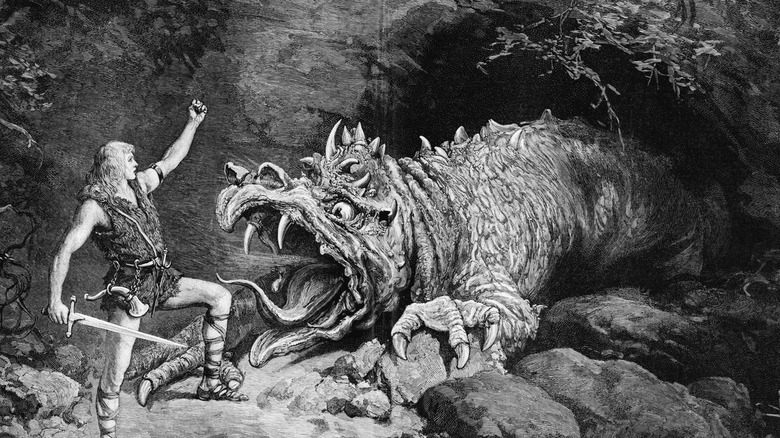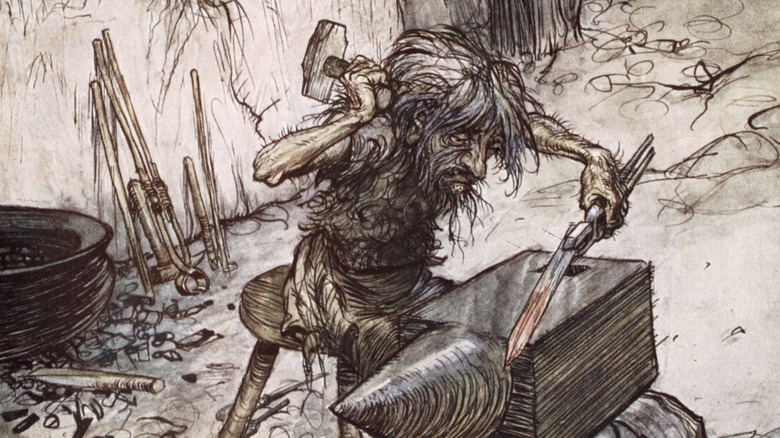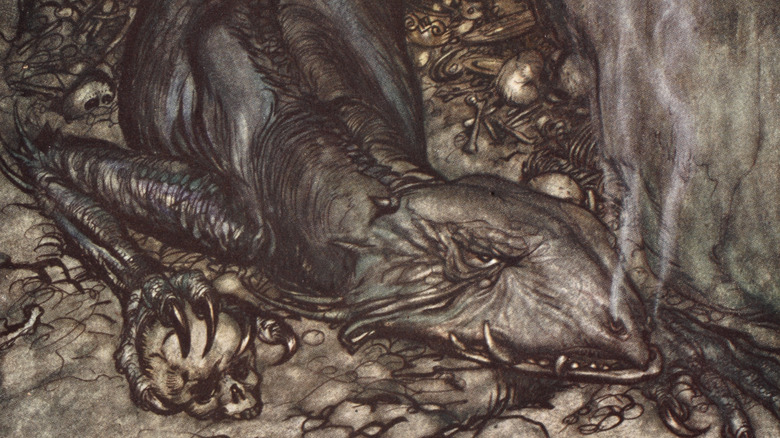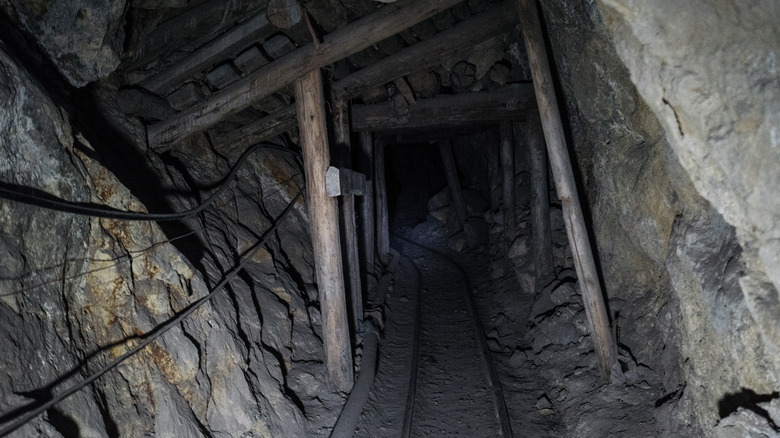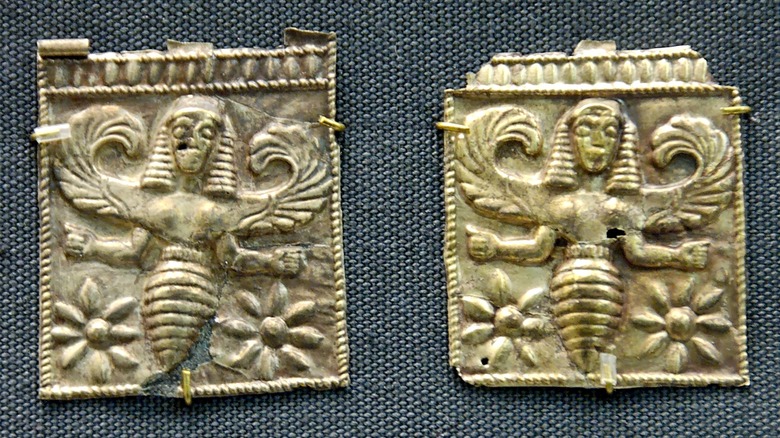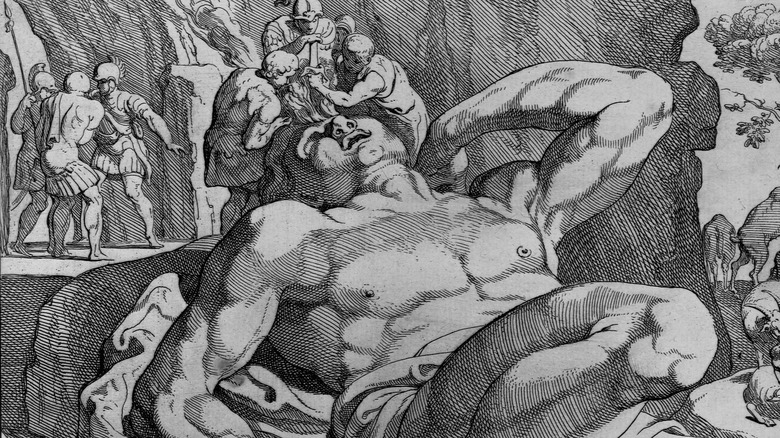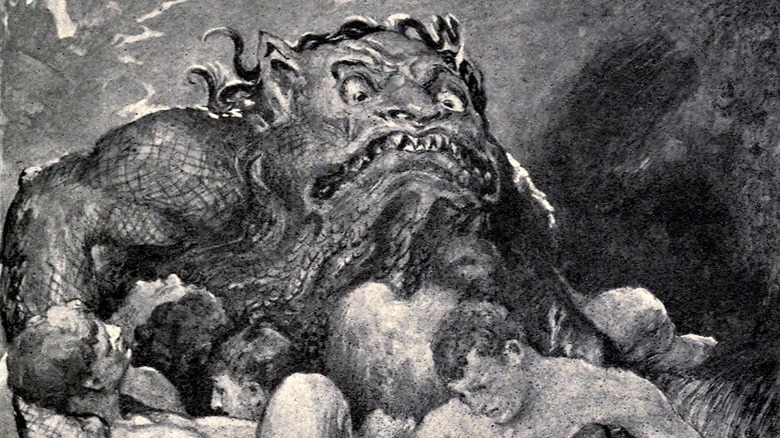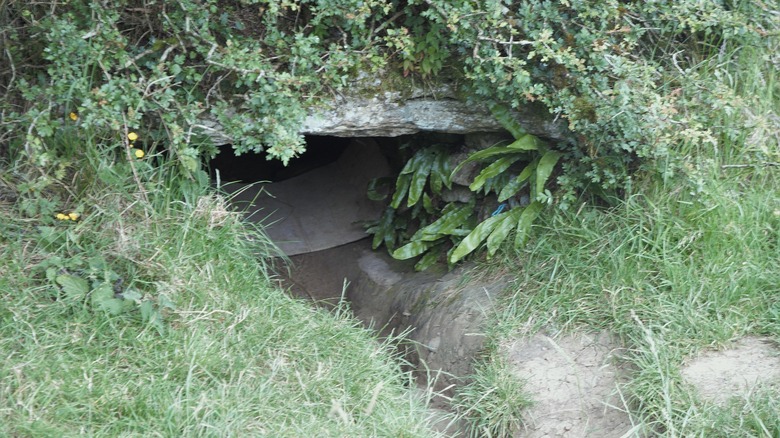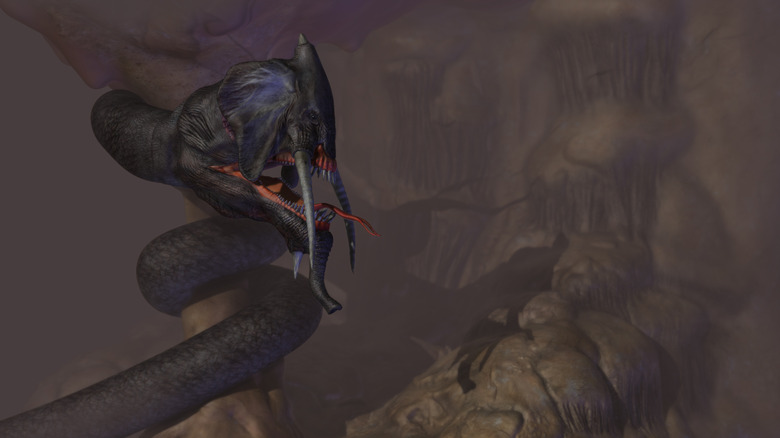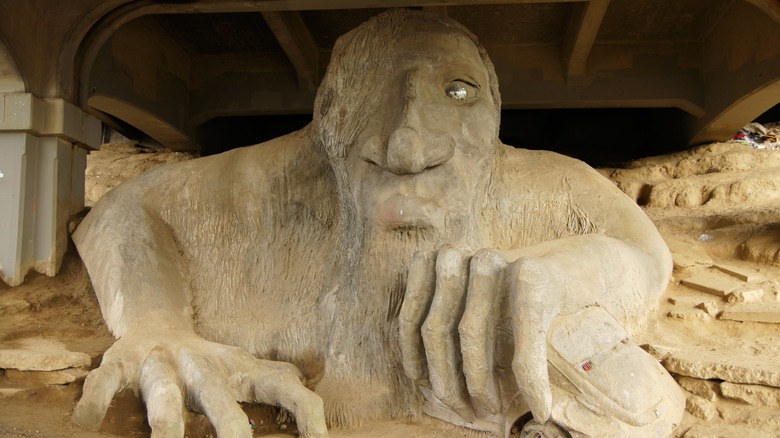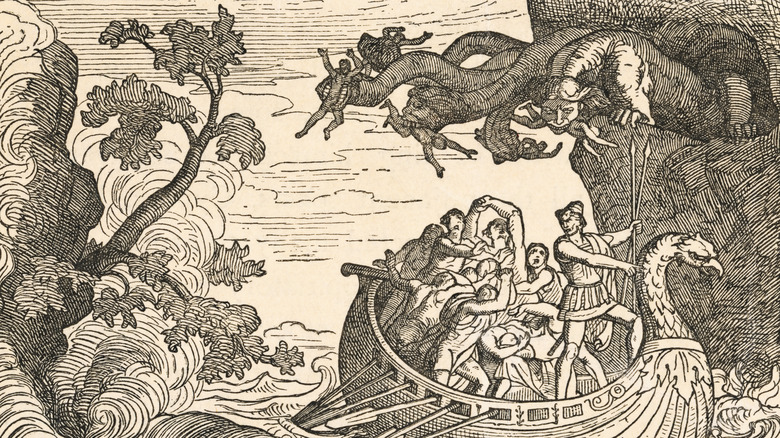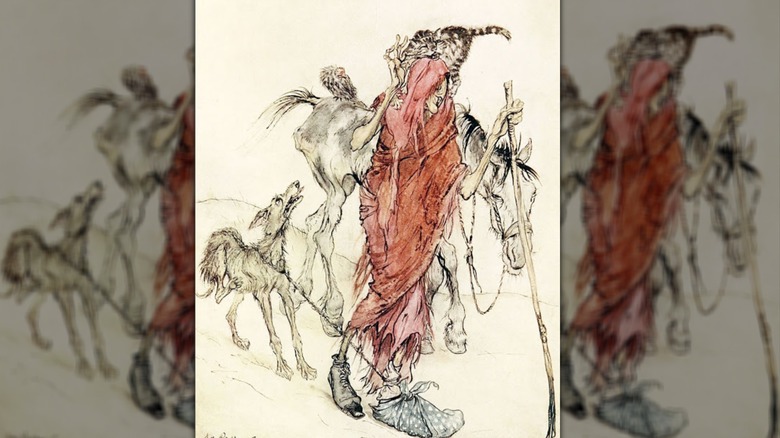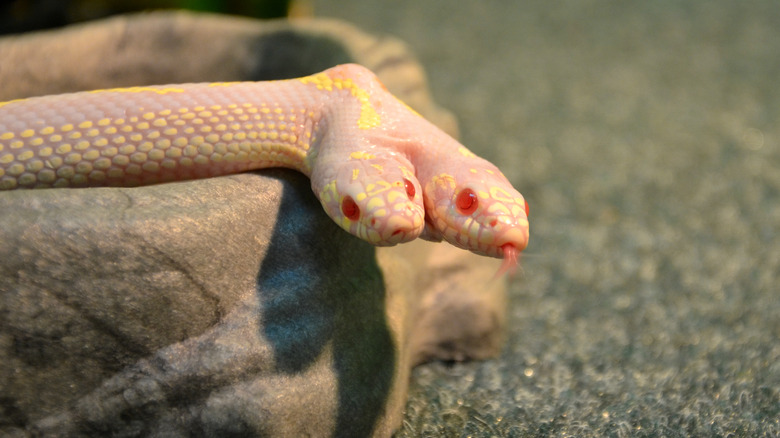Legendary Creatures Associated With Caves
Caves are extremely common settings in folklore and mythology throughout history from all over the world. They are dark, mysterious places, and humans who venture into them may return changed – or not return at all. Metaphorically, they often symbolize the unknown, which a hero will have to explore and then return from safely in order to gain knowledge and achieve their goals. In some legends, they are literally gateways to other worlds or entrances to the underworld. Unsurprisingly, in many of these legends, humans encounter creatures in the dark.
Some of these creatures are mischievous and may play tricks on people who happen into their lairs, like the Peruvian Muki. Others, like the Bulgarian snake king or the Ancient Greek bee maidens, hold secret knowledge that the right hero can interpret. Many, like Norse trolls, may consume people foolish enough to venture into their caves looking for shelter. Others, like the terrifying Homeric epic monster Scylla or the Old English saga's Grendel, only emerge from their caves to hunt humans.
Dwarf
In popular folklore and many modern fantasy adaptations, dwarves are usually depicted as small bearded men who live in mountain caves. This likely goes back to some of the earliest stories about dwarves, or dvergar, in Norse mythology, where dwarves are depicted as master craftsmen who live deep underground. In several legends, like the story of Alvis in the 13th-century Icelandic text the "Prose Edda," dwarves actually turn to stone if they are touched by sunlight, which may be why their kind choose to live their lives underground and in dark caves.
In most Norse myths these cave-dwellers aren't heroes or villains, but highly skilled artisans with the ability to craft powerful magical items – including forging the thunder god Thor's famous hammer Mjolnir and spinning real gold into hair for the goddess Sif after the trickster god Loki cut hers off as a joke. Although they can offer incredible wares to heroes and gods who deal with them, the dwarves of Norse myths drive hard bargains and harshly punish those who don't pay them fairly. In one story, the immensely powerful Freyja, goddess of love, war, death, and fertility, visits a dwarven cave and has sex with several dwarves in exchange for forging her a magic collar. In another legend, Loki attempts to get out of a bargain with the dwarves using verbal trickery and they respond by stitching his mouth shut.
Dragon
In modern fantasy, dragons can often be found sitting on a hoard of gold in a secret cave lair. While it remains popular to this day, this characterization of dragons isn't new. As far back as Indian legends set in the first century, dragons were already living in caves.
Some believe that these legends about cave-dwelling dragons may have come from stories about snakes that lived in India at this time. Whether or not real creatures being found in dark caves actually inspired the first dragon legends, as described in Phil Senter, Uta Mattox, and Eid. E. Haddad's 2016 article in the Journal of Folklore Research, dragon myths are often blended with real history. In one story, the real 4th-century historical figure Alexander the Great is described as traveling to India specifically to acquire a dragon of his own. There, he discovered a dragon that was so massive that its eyes were as large as shields. Although it only stuck its head out of the cave to hiss at the famous conqueror, he could tell that it was extremely large. He initially considered slaying the dragon but was told by the local people that it was holy, so he left it in peace.
Muki
There is a long history of mining in the Andes mountains, and for generations, miners in Columbia, Bolivia, and Peru have told stories about creatures living in the man-made caverns in the mountains. One of these is the Muki.
The Muki is often depicted as doing things that a human miner would do, like wearing their clothing and carrying their lights. However, if it is trying to disguise itself as a human being, it is wildly unsuccessful, because its physical body is so different from that of humans that it would never be mistaken for one, even in a dark cave. The Muki is supposed to be a two-foot tall, pale, muscular creature with huge feet, lank blond hair, and enormous lamplike eyes. These legends probably evolved from even earlier tales from the region about underground monsters and demons that were believed to come from the underworld.
The Muki is sometimes described as a mysterious creature like a poltergeist who sabotages mining equipment and steals things from the miners. In other tales, they make deals with miners, agreeing to help them with their work in exchange for food – but it's not always wise for humans to accept their offers. The Muki may be a trickster, or punish those who don't carry out their part of the bargain by collapsing the cave they are working in, trapping the miners underground.
Bee Maidens
Greek mythology features many nymphs and nature spirits, but the strangest of these may be the soothsaying bee maidens. They are three creatures with the heads of women and the bodies of bees, who live in the Corycian Cave, a real location in Greece. As described in Hilda M. Ransome's 1937 work "The Sacred Bee in Ancient Times and Folklore," these three bee maidens had the power to see the future as long as they ate honey. As strange as this may seem, some historians believe that nymphs (nature spirits that were believed to live very long lives) and bees may have at one time been seen as the same thing – both living in caves.
In Ancient Greece beehives thrived in caves because they often had fresh water springs inside and were safe from wind and rain. Many legends, like the Bee Maidens teaching the sun god Apollo, or the infant king of the gods Zeus being fed by nymphs and bees, take place in caves. It is believed that Ancient Greeks may have worshiped and attempted to tell the future in caves in order to be closer to the bees, and their mythical equivalents, the nymph Bee Maidens.
Giants
While one might expect the creatures in folklore and mythology that live in caves to be small so that they can easily live in dark underground spaces that would be cramped for humans, some are enormous. Throughout many cultures around the world, there are legends about humanoid beings who are much, much larger than human beings. Intriguingly, many of them live in caves. In some cases, real-world caves may have actually inspired the myths.
One legend from the Krachi people of West Africa describes a terrifying giant with miles and miles of white hair who lives in a huge cave. The giant was the manifestation of death itself and tricked young humans into serving him in exchange for delicious meals. In Homer's Odyssey, the man-eating, cycloptic giant Polyphemus lives in a cave with his flock of sheep. In Norse mythology, the fire giant Surtr, sometimes called the Scorcher or The Blackener, lives in a cave system under the earth. As described by the Archaeological Institute of America, it is believed that this legend may have been inspired by an enormous 40 ft. cave in Iceland that was created by lava flows. Not all humans who found giant caves were necessarily in danger, however. In one Icelandic legend, recounted in John Lindlow's "Trolls," a settler travels to a giant's cave in order to recite a poem for it.
Grendel and his mother
"Beowulf" is an Old English epic, likely written in the 8th century. The first part of the story describes how the King of Denmark's hall is attacked by a terrifying creature called Grendel that emerges from a nearby swamp every night to capture and eat the King's men. The hero Beowulf rips off the monster's arm, killing it, only to have the creature's mother seek revenge. To fight her, Beowulf dives into the swamp and finds a cave at the bottom, which is their lair. There, Beowulf finds a magic sword and, after a struggle, uses it to kill Grendel's mother.
This cave is not only a terrifying den of monsters within the context of the story, it is highly influential in modern storytelling. As described by Bazimaziki Gabriel in the International Journal of English Literature and Social Sciences, one of the traditional stages of Joseph Campbell's story structure is actually called "the approach to the innermost cave" in which a hero metaphorically has to go to a deep, dark, monstrous place to find what they are looking for. In the highly influential Beowulf, this is literally what happens.
[Image by John Henry Frederick Bacon via Wikimedia Commons | Cropped and scaled | CC BY-SA 4.0]
Demons of the Hell-gate of Ireland
Before October 31 was Halloween, it was Samhain: an ancient Celtic festival during which it was believed that the spirit world was closer to the natural world than any other night of the year. According to legend, one Samhain a wage of monsters poured out of the cave of Cruachan – now called the "Hell-gate of Ireland."
These creatures included a horde of goblins, a flock of red birds, and one deadly three-headed vulture. As detailed in Carol Rose's "Giants Monsters, and Dragons: An Encyclopedia of Folklore, Legend, and Myth," this was the notorious creature called Aillén Trenchenn, which was believed to live in both caves and ancient burial mounds, emerging only to make war on humans. The night of Samhain, when the monsters emerged from the cave of Cruachan, the Aillén Trenchenn was leading them, intending to kill everyone in Ireland.
[Image by Gillaween via Wikimedia Commons | Cropped and scaled | CC BY-SA 4.0]
Grootslang
The grootslang is described as having the body of a massive grayish-green snake, an elephant head, a cobra hood, poisonous tusks, and slitted eyes. Like elephants, they are supposed to live in large herds consisting of mothers, babies, and caretakers that stay together for their entire lives, while the young bulls leave to make their own way. According to the South African legends recounted in D.R. McElroy's "Superstitions: A Handbook of Folklore, Myths, and Legends from Around the World," these creatures live in an endless cave system below the earth that is full of diamonds.
It is believed that the grootslang was created by the gods by mistake, but at least one fled into the caves before they could be unmade. Theoretically, the grootslang could eat humans, but what they want most are precious gems, and in many folk tales humans are able to barter for their lives by offering the grootslang more diamonds to let them leave in peace.
[Image by Jeff McArthur (Guategeek) via Wikimedia Commons | Cropped and scaled | CC BY-SA 3.0]
Trolls
J.R.R. Tolkien's work has forever linked trolls and caves in the public consciousness, from the Trolls' cave in "The Hobbit" to the Cave Troll in "The Lord of the Rings." Like much of philologist Tolkein's work, it was inspired by much older folklore.
Often, stories about trolls involve a human inadvertently taking shelter in a cave that turns out to be a troll's lair. As recounted in John Lindlow's "Trolls," in one 15th-century story from Iceland, a prince goes into a cave hoping to find a fire, only to have a massive female troll named Gríðr return home and find him already inside. She is described as bearded and bald with enormous claws, big ears, and green eyes. Her snotty nose produced a breath so loud that he believed a storm was approaching.
Another Icelandic saga tells about a troll couple who live in a cave in a place called Helluland, which many scholars believe may have referred to North America. These first American trolls, named Iron-Nose and Sledgehammer are spotted by the story's hero sitting around their fire inside their large cave and playing a game in which they attempted to connect their nose piercings – which were a hook and a ring.
Scylla
Scylla is one of the most disturbing creatures mentioned in Homer's "The Odyssey" and is described as being impossible to kill and so terrible that even the gods are afraid of her. She is 12 feet tall with six heads, with three rows of teeth in each jaw. She lurks inside her cave all day and all night, poking her long necks out to look for her favorite prey: humans.
Syclla's cave is tactically located near a massive whirlpool which forces ships close to the mouth of her cave. At first, this way likely seems safe to approaching ships, as she hides from view as they get closer, and the sounds she makes sound like a puppy yapping rather than a ravenous monster. When the ship passes by, however, she lashes out with all six heads, snatching sailors off the deck. In the story of Odysseus, he actually does know about Scylla because he was warned by one of the gods, but is still forced to sail in front of her cave and allow her to eat six of his men rather than sail his ship into a whirlpool that would destroy the ship killing everyone onboard. After Syclla snatches them up in her jaws, she pulls them back to her cave where she slowly consumes them, still alive and screaming for help.
Tylwyth Teg and hags
In Welsh folklore, it was common for caves to serve as doorways to the fairy realm. This meant that humans who happened to live near caves would often spot magical creatures coming and going, and those who wandered inside were at risk of finding strange creatures living in the darkness.
Some large caves in North Wales were believed to be home to a type of fairy called Tylwyth Teg, who legend states were often seen outside of caves singing and dancing together. The local shepherds told a story about one of the Tylwyth Teg named Mary who would climb through the mountains playing the harp. The local boys were so taken with her that they would try to chase her up the mountain, but she was too quick for them and would disappear into her cave.
Not all magical cave-dwellers in Welsh folklore were described as being so enchanting, however. While they might be home to singing and dancing fairies, they might also contain ancient, hideous, and malevolent witches known as hags. In one legend, men who may have been seeking treasure ventured deep into a mountain cave by the light of an entire pound of candles. In the deepest, darkest part, they found a hag washing her clothes in a brass pan.
Two-headed snake king
In Bulgarian mythology, caves are sometimes described as a way of traveling from one world to another. At the entrance to one of these nether worlds (or perhaps the end of the world, depending on the legend) is a massive cave filled with good snakes. Snakes that had bitten humans or their pets were not allowed inside, and would instead freeze in the cold netherworld.
It might seem strange that seemingly ordinary snakes would be the mythical inhabitants of a magical cave like this, but snakes are important creatures in Bulgarian myths and were even believed to be a kind of cosmic keystone that made the world keep running as it was supposed to. In one legend, an enormous snake is actually responsible for wrapping itself around the world and holding it together.
According to legend, the king of the snakes was one of those who lived in the cave at the end of the world. He could be distinguished from ordinary snakes because he had two heads. Both he and his queen are supposed to always have a brilliant gemstone in their mouths, which would allow humans to understand the language of animals if they were able to steal it from the snakes.
